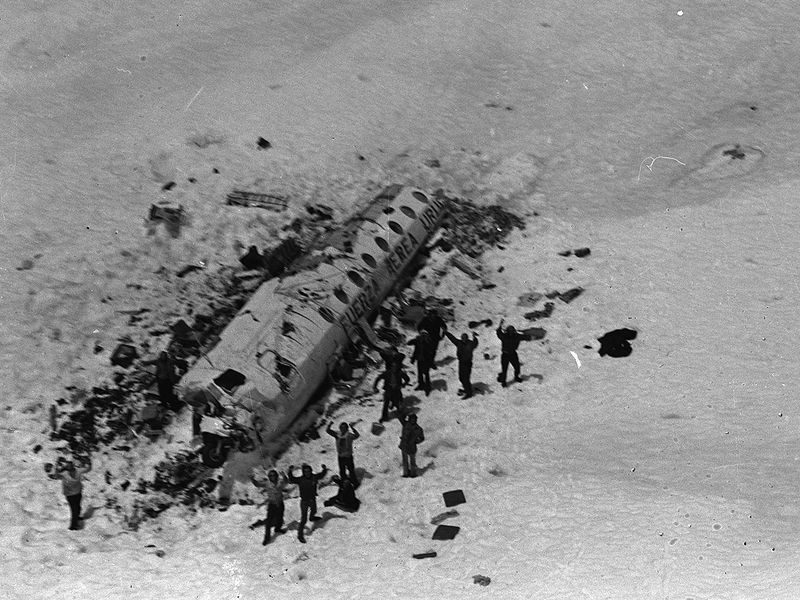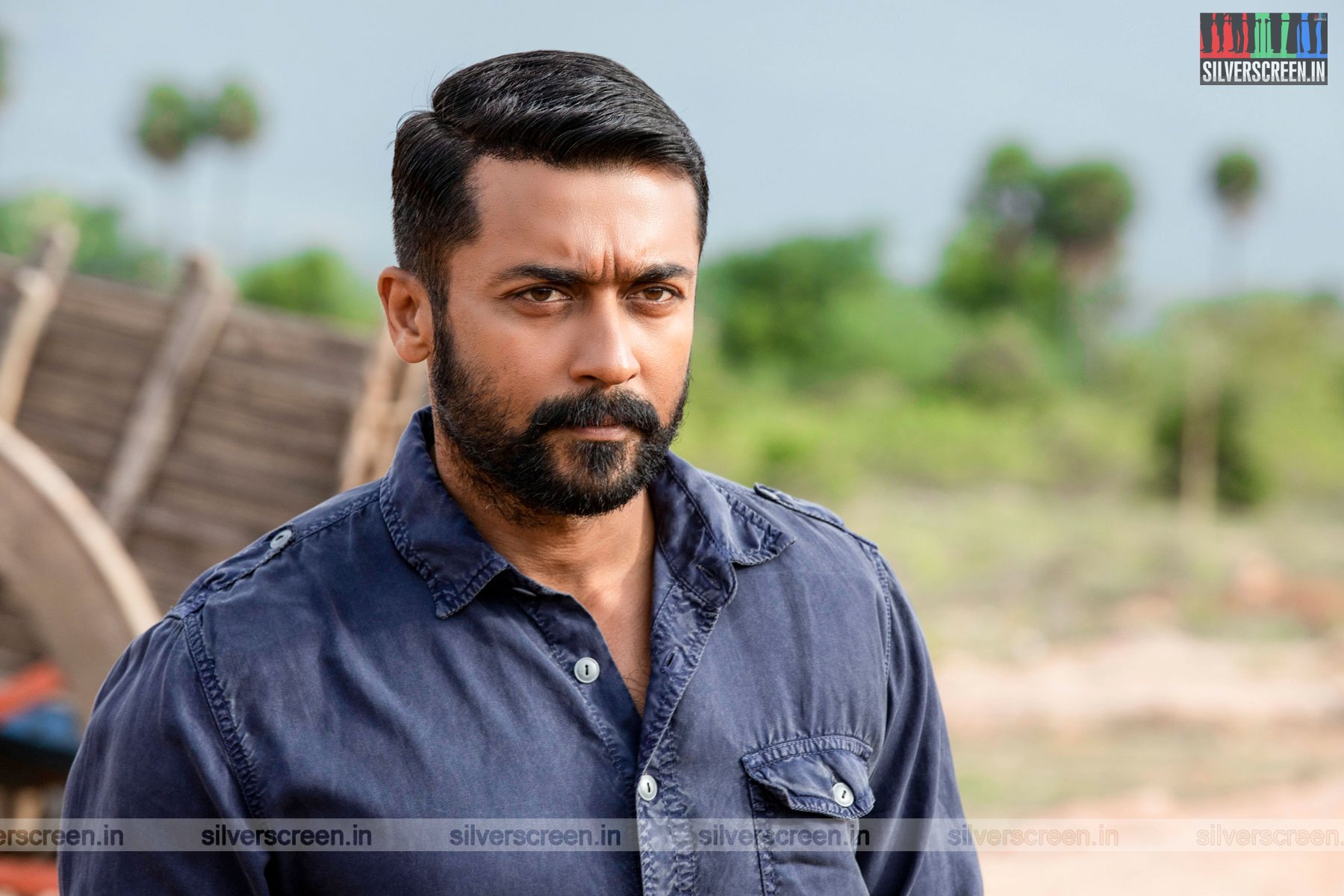Forty-five years ago, on October 13, also a Friday, a bunch of rugby players from Uruguay boarded a plane. They never made it to their destination. The chilling air crash and their subsequent survival would later become the subject of several documentaries, a 1993 feature film starring Ethan Hawke, and also, quite a few pieces of music.
A few minutes into the 2010 documentary I Am Alive: Surviving The Andes, Nando Parrado, a rugby player, and one of passengers on the doomed 1972 Uruguayan Airforce Flight 571 from Montevideo, talks about Friday, the 13th, in a distinct Spanish lilt. “I’m not a superstitious person,” he says, “I don’t care about that; nothing made me believe that something horrible was going to happen that day.”
At the time the documentary film was shot, Parrado was 60, but his hair betrayed no hint of gray. “I’m Nando Parrado,” he tells the camera, “I’m one of the 16 survivors of Flight 571 which crashed into the Andes mountains on Friday, the 13th of October, 1972.”
Parrado’s introduction is preceded by a shot of the beautiful peaks washed in snow, set to a low haunting score. An old Chilean saying flashes on screen: ‘The Andes don’t give back what they take’. They are the longest continental mountain range in the world, bordering South America.
On October 12, 1972, The Old Christians, an amateur rugby team in Uruguay charters a flight from the Uruguayan Air Force for a match in Chile. Players and associates aside, the rest of the seats are sold to friends and family of the players. Parrado, in the documentary, recalls jumping at the opportunity to bring his mother and 18-year-old sister along. They could shop for four days, while he trained and played. “It was my gift to them,” he says.
Roberto Canessa, another player (also a medical student) aboard the plane, is all silver in this 2015 documentary. Once called ‘Musculos’ or ‘Muscles’ for his sheer physical strength, he was 19 years old at the time of the crash. His girlfriend of three years, Laura Surraco, was grim about the trip. “He was going to meet a lot of girls in Chile,” she laughs, “none of the girlfriends were happy.” The weather in Chile is warm, and the boys had dressed lightly – in shorts and sports jackets. The pilot at the helm of the aircraft is Colonel Julio Ferradas, who powers his aircraft – a Fairchild FH-227D — through the Planchon pass in the Andes mountains. He grossly misunderstands his coordinates, thanks to the dense cloud-cover, and thinks he’s in Curico – a city in Chile – when in fact, the aircraft is still in the middle of the Andes. The radar signals are weak in the area and render the navigational instruments on the control panel highly inaccurate. The pilot, soon after radioing to Santiago that the airplane is in Curico, descends to 15,000 feet.
The entire tragedy, re-enacted in the documentary, shows the plane as it hits an air pocket, bounces, and finally crashes into a peak. The tail splinters on impact while the fuselage hits the ground and races through the snow before coming to rest on a snow bank. Twelve die in the crash, five the next morning, and one more person on the eighth day. The 27 people who survive the crash, meanwhile, struggle to live at an altitude of 3,600 metres. They share a few candy bars among themselves, and some wine. They severely ration food, melt snow for water, and huddle in the fuselage for warmth. Soon, they run out of food.
A moment in the documentary focuses on Carlitos Paez, another survivor, as he talks about scouring the storage compartments for something to eat. “I told Nando there’s nothing left there,” says Carlitos, “And Nando looked me in the eye and said, ‘Carlitos, I want to eat the pilot.’”
That really is what the survivors eat for the next couple of months – bodies of their friends – to keep themselves from starving to death. Those averse to the idea are persuaded to eat by citing the analogy to Eucharist – a Christian rite whereby bread is considered Christ’s body and the wine, his blood.
Ten days after the crash, the first flesh is cut from a body. The survivors fashion knives out of airplane windows, and sharpen them with an axe. Human flesh is mostly consumed raw, for there are no fires due to lack of wood and paper. The film quotes Eric Johnson, survival expert and Everest Base Camp physician, as saying: “When they bring to their mouth, little pieces of protein or fat, what’s their mind telling them? For some, it’s going to be ‘oh my god, it’s my friend in seat 3B’, but for others, when they consume it and their body responds in a favourable way, with a surge of energy, this was a glimmer of hope that if they survive, they can be rescued.” They don’t touch the bodies of family, though. And, close friends.
Recommended
But, the survivors’ troubles are far from over. On October 29, 16 days after the crash, an avalanche rushes down the mountain and hits the fuselage, killing eight. It is then decided that a group would go over the mountain range to look for help. Nando Parrado and Roberto Canessa hike over 4,650 metres in thin mountain air. “I did not want to be in a situation when the only bodies left were that of my mother and sister,” says Parrado. They trek over 40 miles through Andes before finally spotting a Chilean ranger at Los Maitenes, a valley in the Andean foothills of Chile. Between them is a huge river. “The ranger, in remarkable foresight, threw a paper and a pen tied around a rock across the river,” says Parrado.
They are saved. It is exactly 70 days after the crash. Parrado then guides a couple of rescue helicopters over the Andes to bring back the other survivors. And as reporters swarm around the two with questions, they avoid answering the one about food.
Later, when the details are revealed and paper upon paper label the act ‘cannibalism’, Parrado, in the documentary, disagrees. “It is not cannibalism,” he says, “We didn’t kill people to eat. The right term is ‘Anthropophagy’ – eating of human flesh.”
*****
I Am Alive: Surviving the Andes Plane Crash (2010), directed by Brad Osborne, and first aired on History Channel.
Watch here:
Other films and documentaries on the crash include National Geographic’s Trapped: Alive in the Andes, Stranded: I Have Come From A Plane That Crashed In The Mountains (2007), a documentary film that premiered at the International Documentary Film Festival, Amsterdam, and Alive (1993), a feature film directed by Frank Marshall, starring Ethan Hawke.
Parrado and Cannesa also documented their experiences in books of their own.
*****
Featured image: Antonio Caruso for Airspace Mag



